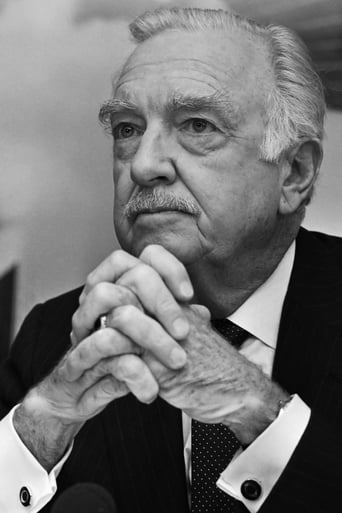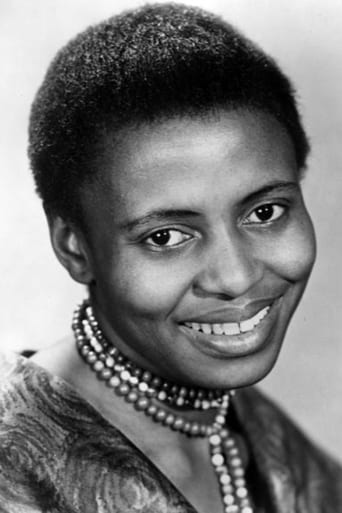Limerculer
A waste of 90 minutes of my life
InformationRap
This is one of the few movies I've ever seen where the whole audience broke into spontaneous, loud applause a third of the way in.
Erica Derrick
By the time the dramatic fireworks start popping off, each one feels earned.
Caryl
It is a whirlwind of delight --- attractive actors, stunning couture, spectacular sets and outrageous parties. It's a feast for the eyes. But what really makes this dramedy work is the acting.
bluheron1
I know this is a minority opinion, and I think if I was South African I would have been very moved by the film. But I just did not understand the issues well enough or know the history and weight of the people interviewed, except for Miriam Mekeba and Hugh Masekela. The film would have worked better for me if it had provided more background and focus for an uninformed American. It certainly never answered the first question I had: how can an entire nation sing so beautifully in four-part harmony? It must have seemed so normal to the filmmakers that they never even noticed that question. But for me, in a world where very few non-professional people know how to sing harmony, it's a stumper.
juan_dollapotz
An excellent blend of archival footage/music and interviews to impart a powerful message and involving film. Lee Hirsch and his team have done an amazing job in cataloging the music and passion of the freedom movement in South Africa during apartheid. Whether one is a fan of music, a documentary enthusiast, has an interest in the anti-apartheid movement or in post colonial Africa, AMANDLA! is a must see piece of film making.
Howard Schumann
For almost fifty years from 1948 to 1994, black citizens in South Africa were stripped of every basic human right while governments of the world pretended not to see. Systematically uprooted from their homes and moved into "townships", they were made to carry passbooks, arrested without provocation, tortured and randomly murdered. But while successive governments took away their freedom, they couldn't take away their songs or their desire for freedom. Today, while there are still problems, Blacks and Whites live together in a free South Africa. Amandla: A Revolution in Four-Part Harmony, an incredibly moving documentary by Lee Hirsch, pays tribute to the role played by protest songs in the non-violent revolution that brought an end to apartheid nine years ago. Amandla means power, and it's the power of the songs that helped to free the people. Hirsch, a young filmmaker from New York, spent nine years in South Africa gathering newsreel footage, video clips, old photos, and interviews with musicians and political activists to show how protest songs expressed the fight against oppression. Winner of the Audience Award and the Freedom of Expression Award at the 2002 Sundance Film Festival, Amandla shows fifty years of South African history beginning with Prime Minister Verwoerd's announcing his racial segregation policy in 1948 describing it as "a policy of good-neighborliness." The film also shows footage of the Sharpeville massacre and the Soweto uprising, and the triumphant election of Nelson Mandela to the Presidency in 1994. Amandla begins with the exhumation from a pauper's grave of composer Vuyisile Mini whose protest anthems led to his hanging in 1964 and ends with his proper reburial fifty years later. It moves forward to depict how the songs communicated to the people in a way that political speeches could not, showing how different phases of the struggle brought forth different types of songs. For decades, songs such as Mini's "Beware Verwoerd", Vilakazi's "Meadowlands", the "Toyi-Toyi" chant and the uplifting "Mandela" by Hugh Masekela expressed the energy and purpose of the South African people and rallied followers to their cause. In addition to the music, there are interviews with those that describe their experience of being imprisoned or were forced into exile. There are even interviews with White riot policeman and executioners, but the power of the film belongs to the music and powerful is an understatement. It is truly moving to watch 20,000 people sing in unison a song that has only one word Senzenina asking, "What have we done?" over and over, "What have we done?" It is worth the price of admission just to hear Sophie Mgcina singing Madam Please, a song written for black domestic workers that includes the lines " Madam, please, before you ask me if your children are fine/ Ask me when I lost all mine". Amandla builds to a joyous climax with President Nelson Mandela singing Masekela's "Bring Him Back Home" before thousands of cheering admirers. It has been only nine years since freedom came to South Africa but many have only a distant memory of the years of oppression and conflict. Similar to movies about the holocaust, Amandla underscores the power of films to help us remember. Though it could be a little shorter or perhaps a little more focused, if you see one film this year, make it Amandla: A Revolution in Four Part Harmony. At the end, you may be short of Kleenex but filled with renewed hope for the human race.
dlfarthing
The music of "Amandla! A Revolution in Four-Part Harmony" is as powerful a force for the South African revolution, as Lucas would have us believe it is for the Jedi.For our time, it also provides a near view of slavery. Thus, this motion picture is a must see not only for people of color, it is such for all the people to see. DLF






